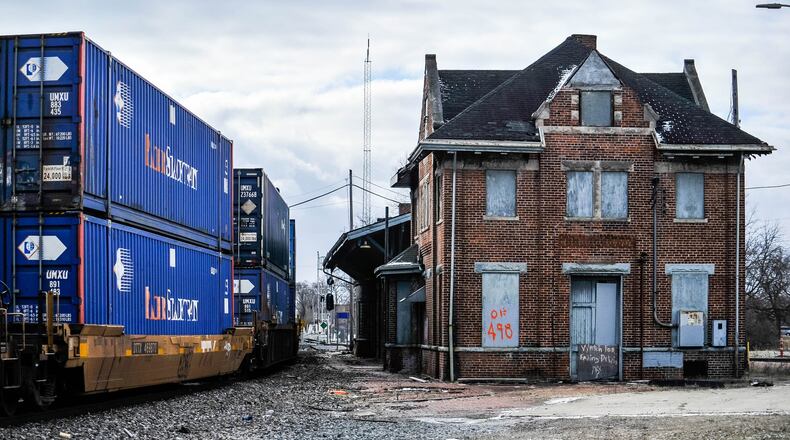But after an emotional conversation, council did not decide whether to save both parts of the 164-year-old station. That decision was delayed until the June 23 meeting.
Costs of the city’s spending on the project approximately tripled at Wednesday’s meeting. Previously, officials discussed estimates of $325,000 to move the single-story building and place it on a foundation or about $650,000 to move it and a two-story building and put both on foundations at the new spot, near the intersection of Martin Luther King Boulevard and Maple Avenue.
City Manager Joshua Smith on Wednesday recommended that if council wanted to save the station from demolition by owner CSX, the city should commit to bringing the single-story part of the building to a state at which a yet-to-be-determined tenant could fill it.
That would include adding parking and bathrooms to the building and would cost about $1.5 million and a total cost of about $1.8 million. Smith did not get estimates for bringing the two-story part of it to that same state, which would further raise costs.
The vote was an emotional one, with Susan Vaughn saying it had caused her more consternation than any other in her 18 months on council, and Council Member Michael Ryan saying he had lost sleep in recent nights over it. Council Member Carla Fiehrer said she believed her colleagues were making a decision based on emotion rather than practicality and expressed hope the project would not become a “money pit.”
Vice Mayor Eric Pohlman said the matter was so important to him that he connected electronically and voted while vacationing in Florida. He seconded the motion to approve the legislation.
Officials have not decided what city funds to use to pay for the project, but they may include general fund money or utility funds. They aren’t certain whether federal pandemic relief grants can be used.
Most citizens who spoke favored saving the station. Robert Batterson of Franklin Street favored allowing CSX to tear it down.
“I don’t want to move it and have it sit there,” he said.
Resident and landscape architect Dan Schneider, who voluntarily created a video of what the relocated building could look like, complete with a plaza and sculptures of the presidents who made “whistle-stop” tours that included Hamilton, told council that the station could “be a great focal point for this end of town.”
Other people, including Mayor Pat Moeller, suggested uses including a Hamilton visitors’ center, train museum, pub, gallery and retail.
Vaughn said discussion about saving the station has been sudden and not complete, arising only in recent weeks. She said she felt the need to be “fiscally responsible — there were no dollars set aside for this. We have no purpose for this as of yet. We have no retailer or restauranteur coming forward and saying, ‘I want to take on this business.’”
Vaughn added she was “vehemently opposed” to using federal pandemic recovery funds.
“We have things in our community to consider. Safety. Personally for me, I would love to see a new public safety building. Safety, services, things that serve the entire community,” she said.
Ryan said he supported saving the station because it would continue something Hamilton has been successful with: ”taking the old and turning it into the new,” as is being done with conversion of the Champion Paper mill into the Spooky Nook Sports Champion Mill indoor sports complex.
Fiehrer said she didn’t want the project to become a money pit. “Should general-fund money be put into this when, as Susan said, we could have a safety center built somewhere? There is so much more that we could do with this that should be affecting people that are living, breathing here right now. So to put any general-fund money in it? I think that’s a sin.”
Pohlman told his colleagues, “You have to take risk in business,” and said he trusted Smith and his staff to find tenants for the building within an year of completion. “I think it’s going to be a show piece.”
Smith clarified that he believed rents for the property would only be able to finance ongoing maintenance of the station, not recover costs of moving or refurbishing it.
“We’re going to vote with an open checkbook?” Fiehrer asked, when her colleagues decided to postpone the question of how many buildings would be saved. “That’s just not right.”
Council Member Tim Naab disagreed, saying he believed it would be best for officials to “take a breath” and decide whether to save one or both buildings in two weeks.
About the Author

